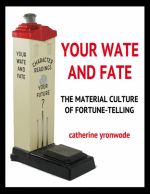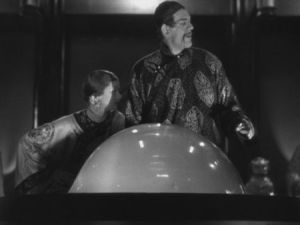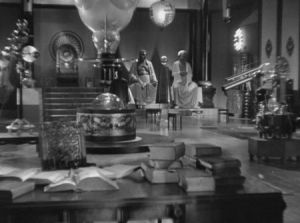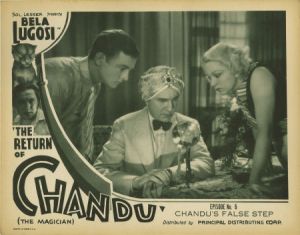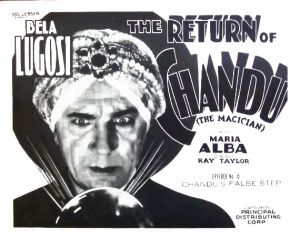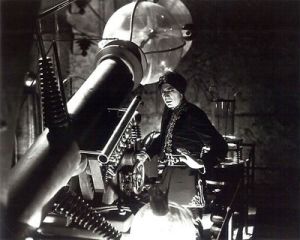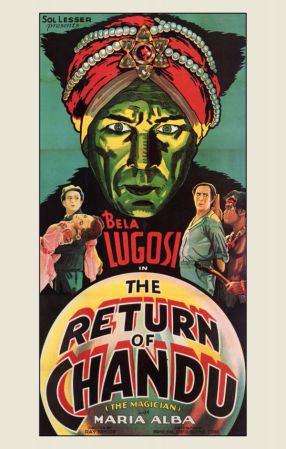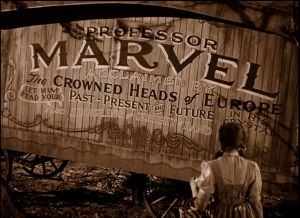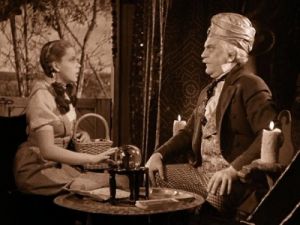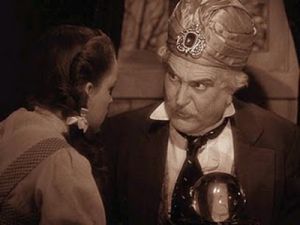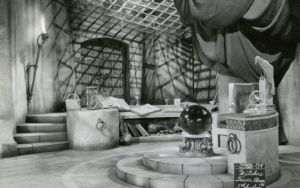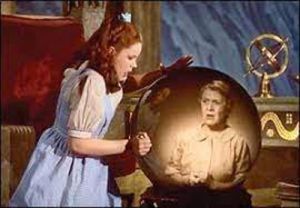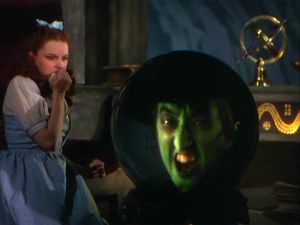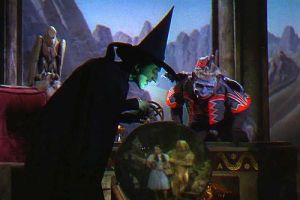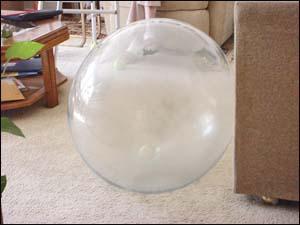Crystal Balls in Film 2
My Patreon supporters paid for this page and had access to it one full year before the public did.
- Patreon Release Date: March 28th, 2023.
- Public Release Date: March 28th, 2023.
Please tell your friends that they can subscribe to my Patreon stream for $2.00 per week:
Patrons: To discuss this and other Patreon pages with me, join my private Patreon Forum:
Support Your Wate and Fate
All of the material you have access to here -- the instructive booklets, the nostalgic postcards, the boldly graphic ephemera, and all of the historical information researched and shared from the mind of the woman who is making it all happen -- can easily fit into one 8 x 10 foot room in an old Victorian farmhouse, but you would never see it without the investment of the time it takes to produce such a site and the caloric input such a site requires in the form of food for the writer, graphic designer, and database manager, as well as the US currency needed to pay for the computers, software applications, scanners, electricity, and internet connectivity that bring it out of that little room and into the world.
So, as you can see, this site is the darling of many, and it is growing at a rapid rate ... but although it is "free," there also is a cost. The financial support of my Patreon subscribers -- my Patrons -- underwrites this cost.
Crystal Balls in Film Part Two
When considering the subject of fortune telling, one is immediately hi with the generally agnostic or atheistic attitude toward any other form of spirituality or folk belief beyond extreme deference to Christianity (often in the form of Catholic devotionalism). Once the self-imposed film industry guidelines known as the Hays Code was instituted in 1934, not only was sexuality suppressed in cinema, but, with a few exceptions, actors from all ethnic minority cultures -- Jews , Blacks, Asians, Native Americans -- were mostly eliminated from leading roles and reduced to small comedy bits or set pieces as as villains or victims. Fortune tellers underwent the same degradation, and in very few post-Code films are the psychics truly psychic.
During the Hays Code era, from 1934 to 1968, fortune tellers were generally portrayed as comedic bumblers, scamming fraudsters, or wicked villains -- and sometimes two of three in the same film. One favoured trope was the fraudulent fortune teller who is is surprised when a prediction actually comes true. Another stereotype was the fraudulent fortune teller who reforms in order to find love, or dies in the attempt. A third styling featured the evil "exotic" fortune teller, often Romani or Asian, who manipulates clients for monetary gain. A fourth concept was the wise elder who dons a costume and poses as a fortune teller to convey information to younger people in order to improve their lives.
In addition to the cultural biases against fortune telling that permeated early to mid 20th century film, the portrayal of psychic readers faced other considerable barrier as a subject for film -- one that is a ludicrous byproduct of the filmic art itself: the tools of fortune telling are too small to film well! It sounds so silly, but think about it: cartomancy, palmistry, horoscopy, tasseomancy, dice reading, domino reading, and crystal gazing are table-top activities, and their tools generally fill a space from two inches square, for a small crystal ball to the size of a sheet of letter or legal paper, for a horoscope.
1934: "The Return of Chandu (The Magician)" starring Bela Lugosi and Maria Alba. Bela Lugosi as Frank Chandler (Chandu) charges up his giant crystal ball machine. This is said to have been the same large crystal ball prop seen in "The Wizard of Oz" from 1939.
Black and white publicity still.
Genre: Fantasy.
What this means in terms of cinematic staging is that a wide view of a room will not disclose the c of these tools, and only a close-up will let the audience see them. But even then, how will uninformed viewers interpret the images? Will a tarot card of the 3 of pentacles be meaningful? How about the lines on the palm of an actr's hand (and what if the actor's lines do not crrespond to the nature of the character he is playing)? Can the roll of three dice be significant to a film-goer? The answer is, "No," and of all the popular methods of divining, only astrology looks good when blows up to the size of a wall chart. As for crystal balls -- too small, too reflective, too clear.
These problems were solved in various ways for various forms of fortune telling in cinema -- but for crystal balls, one coloution was obvious: BIGGER BALLS.
1939: "The Wizard of Oz," starring Judy Garland and Frank Morgan. Dorothy Gale (Garland) approaches the travelling abode of Professor Marvel, which reads "Professor Marvel, Acclaimed by the Crowned Heads of Europe; Let Him Read Your Past - Present and Future in His Crystal; Also Juggling and Sleight of Hand."
Sepia tone publicity still.
Genre: Fantasy.
In an earlier episode, on Crystal Balls in Art, which i titled Lovely Ladies and Their Little Balls, i presented gallery and commercial art that featured women holding small crystal spheres, ranging in size from 2" finger balls to 3" palm balls. Although these sometimes appear in film, they are more likely to be placed on a stalk-like sand than to be held in the hand. Far more common in cinema, however, are 4" and 5" table balls, placed in carved wood stands or cast brass stands of an Asian type.
But, as ethologist Nikolaas Tinbergen demonstrated in like what T.N.C. Vidya calls "the curious phenomenon of exaggerated responses to supernormal stimuli in animals,"
See Also
Lovely Ladies and Their Little Balls
To Discuss This Patreon Page
This Patreon Bonus Page is part of the series titled "Your Wate and Fate." To discuss it with me and the Patreon community, please visit our Private Patreon Forum at
http://forum.luckymojo.com/your-wate-and-fate-t93995.html
Thank you.
catherine yronwode
curator, historian, and docent
Your Wate and Fate
Special thanks to my dear husband and creative partner nagasiva yronwode for illustrations, scans, and clean-ups.
